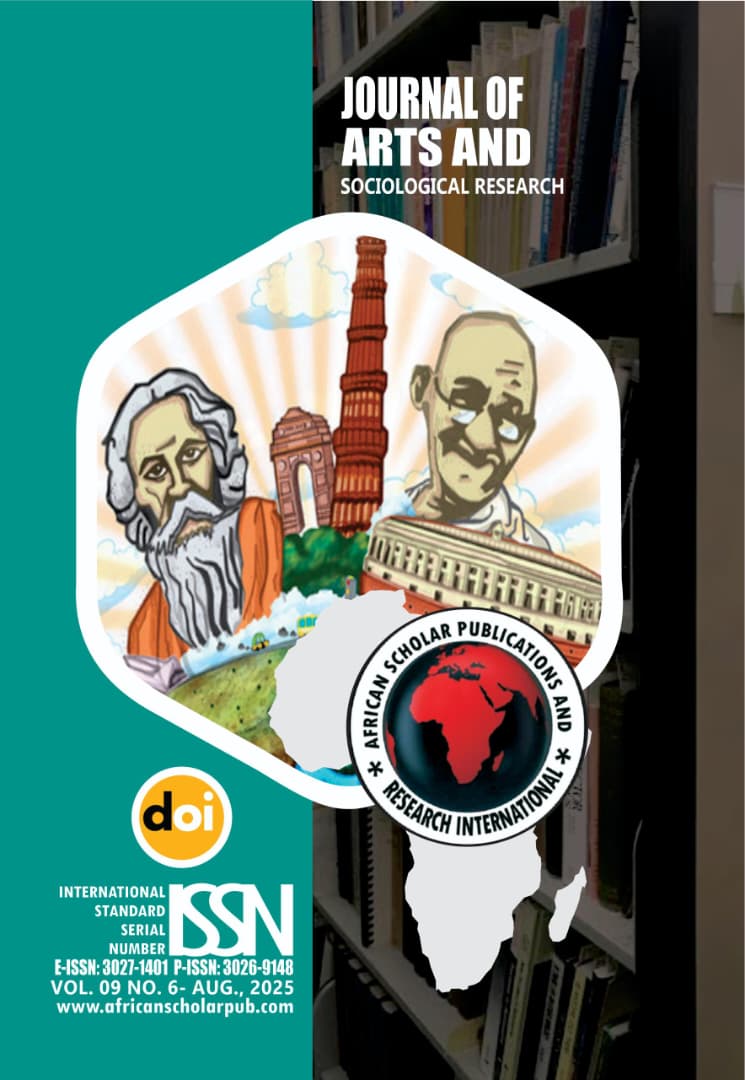Factors Affecting Women Participation in the Electoral Processes in Anambra State, Nigeria
Abstract
Despite efforts by the government, civil society, and international partners to protect women's rights and increased awareness of the need to address gender-based political violence, significant violence against women persisted during elections in Anambra State, particularly in areas with fierce political competition. The main objective of the study was to identify the factors affecting women participation in electoral processes in Anambra State. The study was anchored on the structural conflict theory in order to understand the impediments to effective women political participation and peacebuilding. the study adopted descriptive research design involving survey research and historical research designs. The population of the study is1,466, comprising of the population of women groups (umuada) in Anambra North, women groups in Anambra South and women groups in Anambra Central Senatorial Districts; influential community leaders in Anambra North, influential community leaders in Anambra South and influential community leaders in Anambra Central Senatorial Districts; All Progressives Congress (APC) Secretariat, Awka; All Progressives Grand Alliance (APGA) Secretariat, Awka; Labour Party Secretariat, Awka; Anambra State House of Assembly, Anambra State Ministry of Women Affairs and Social development, and Independent National Electoral Commission, Awka. The sample size of this study is 400, gotten through the use of Rakesh sample size formula. Data were collected using 5-Point Likert Questionnaire, in-depth interview and secondary sources. Data from questionnaire involved administering 400 copies of questionnaire to the respondents on a face-to-face basis, while data from in-depth interview was collected from interview of 14 respondents selected from the target population on the basis of their depth of knowledge and experience on the issues under study. Data from secondary sources were collected from journals and related internet materials. Data from questionnaire relating to the objectives of the study, were analysed using weighted mean. Data from in-depth interview were analysed using narrative-analytic technique, while data from secondary sources were analysed using relational-content analysis. Major finding of the study is that there are multidimensional factors hampering women participation in the electoral processes in Anambra State, including poverty, electoral violence, marginalization and cultural factors. It is recommended, among other things, that given the multidimensional factors that hamper women political participation in Anambra State, the Federal Government through the Federal Ministry of Women Affairs and Social Development should urgently sponsor a bill in the National Assembly seeking to implementation of 35% of women participation in politics in the country to improve the number of women that participate in electoral processes in all the States of the federation, especially Anambra State.
Keywords:
Women, Women Participation, Election, Electoral Processes, Structural ConflictDownloads
Downloads
ACCESSES
Published
Issue
Section
License
Copyright (c) 2025 Ajeroh, Chigozie Adaugo, Prof. Olayemi Akinwumi, Prof. Andrew Zamani (Author)

This work is licensed under a Creative Commons Attribution 4.0 International License.


















